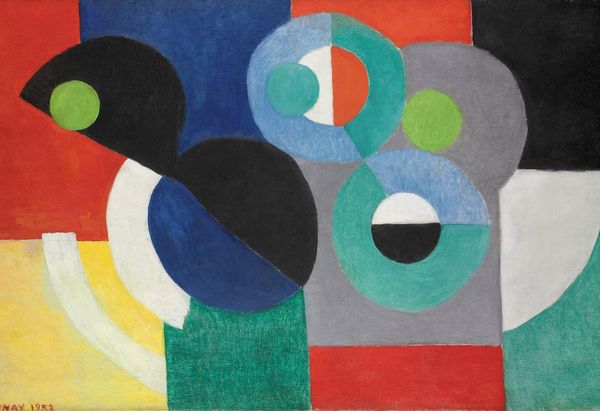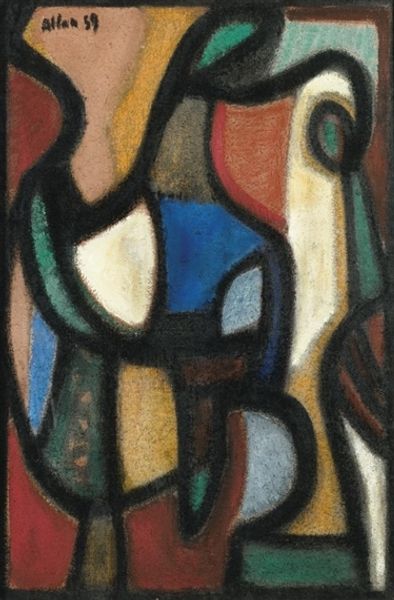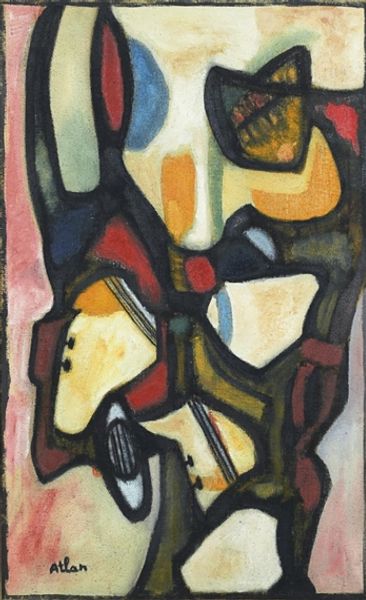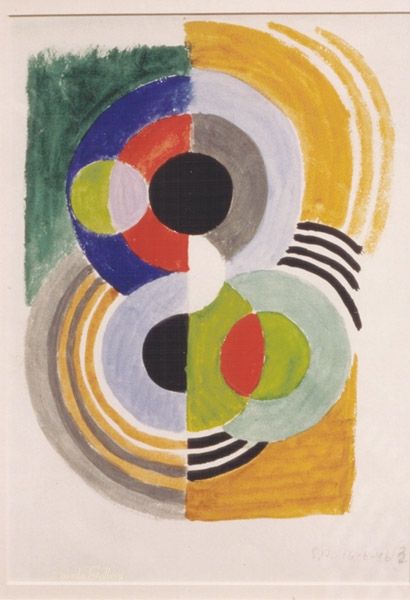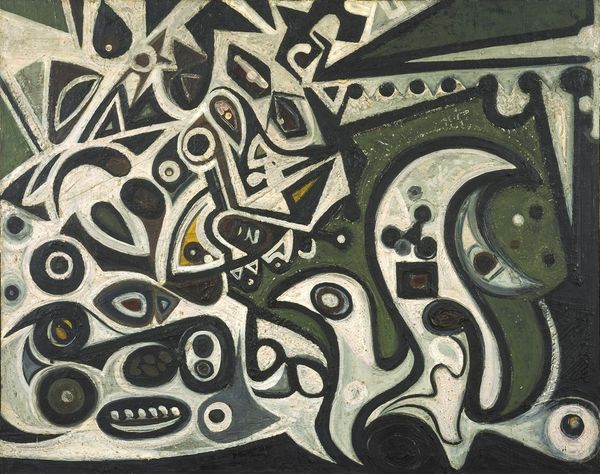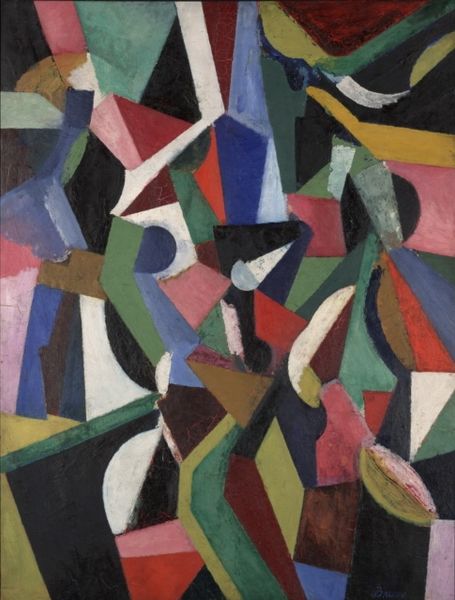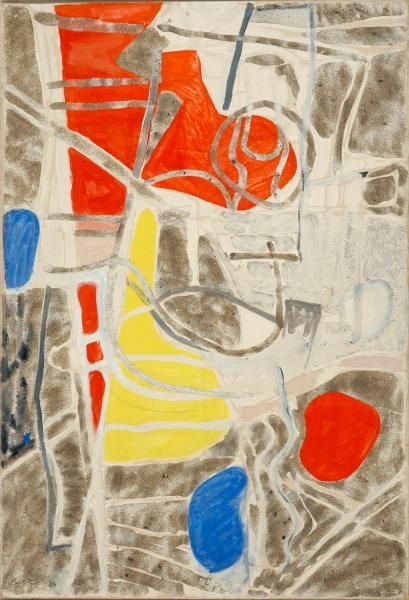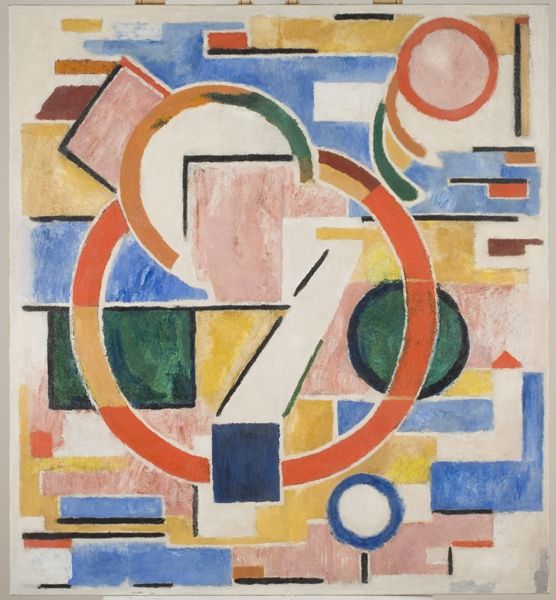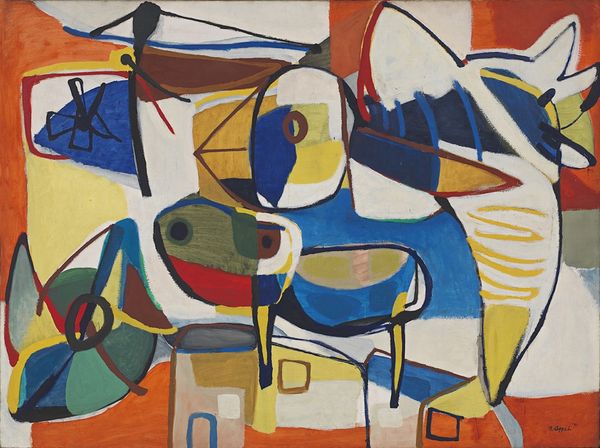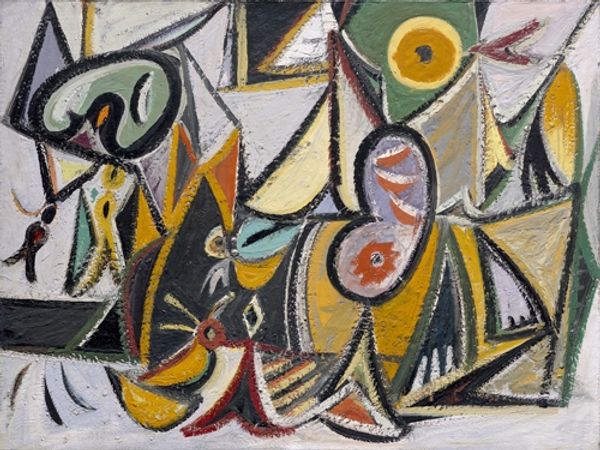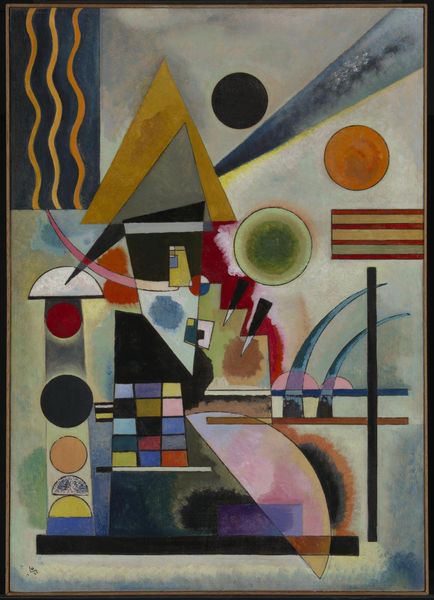
Copyright: Richard Pousette-Dart,Fair Use
Editor: This is "Head of Persephone," an oil painting from 1935 by Richard Pousette-Dart. The figure is created with all these circles and rounded shapes, it's like a geometric puzzle. I'm intrigued by the title—Persephone, the Greek goddess of the underworld—but I'm not quite sure how the image relates. What do you see in this piece that makes you think of Persephone? Curator: Well, consider Persephone’s journey – abducted into the darkness, then returning to the light. Notice the contrasting colors; the dark background against the lighter figure. And the circles...what do they evoke for you? Editor: Cycles, maybe? Circles suggest repetition, like the seasons, and Persephone’s return to and from the underworld. Curator: Precisely. Think of the ring as a potent symbol, present across cultures. Here, each circle, some with inner concentric forms, can be viewed as an individual universe, hinting at Persephone's dual existence in different realms. What about the eyes; what emotions are apparent in their abstracted shapes? Editor: Hmm, I see one circular eye with a red center, it feels piercing, maybe even a bit sad or knowing. The other "eye" seems less defined, perhaps representing her veiled nature, a mystery? Curator: Good observation! These contrasting depictions of the eyes evoke her duality and hint at deeper psychological complexities. Pousette-Dart often explored mythological themes as a way of understanding human consciousness. Could the geometric shapes relate to a kind of prison for the mind? Editor: That's interesting. So, he's not just painting a portrait of a goddess, but using her story to explore ideas about consciousness and transformation. Curator: Exactly! Consider the black outline surrounding each shape as barriers or containers. Persephone embodies change; these stark symbols invite reflection on the potential liberation found even within constraint. Editor: This makes me see the painting completely differently! I was so focused on the shapes; I didn't connect it to these larger ideas about cycles, psychology, and mythology. Curator: And now you can discern how Pousette-Dart invites viewers into dialogue, stimulating introspection regarding inner freedom.
Comments
No comments
Be the first to comment and join the conversation on the ultimate creative platform.


